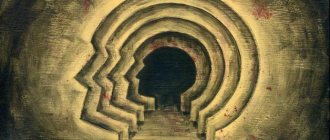Broken windows theory is the brainchild of sociologist George Kelling and political scientist James Quinn Wilson. Thanks to this theory, one of the largest metropolises in the world, New York, in just a few years, transformed from a crime-prone city, in which over 1,500 crimes and about a dozen murders were committed daily, into the most prosperous and safe city in the United States.
The successful application of this theory gave impetus to its use by other countries in the fight against crime. As the broken windows theory became popular, dramatic changes occurred not only in the criminal world. This concept has been successfully used in business.
The broken windows theory - what is it in simple words
This concept received such a “speaking name” because of the phenomenon of a directly proportional relationship between crime and order. If one day you observe one broken window in a house, after a short period of time all the windows in it will be broken. A single violation of integrity and order creates the impression of complete anarchy and impunity.
Simply put, the broken windows theory is a theory that states that the sight of any kind of disorder causes base impulses in people to behave uncivilly: throwing garbage where there is already litter, running a red light because others are doing it, breaking up something what’s broken, shit where it’s already been shit, etc. Such minor offenses cause a chain reaction of larger violations. Impunity for small things gives a signal for more serious crimes.
Returning to New York in the 70s and 80s of the last century, this city was a dangerous and dirty metropolis, where passers-by were robbed in broad daylight, and at night only a madman could go out onto the street. A dirty subway, walls and carriages painted with vulgar pictures and inscriptions; trash and broken bottles lying everywhere; drunks on the streets and beggars brazenly pestering passers-by; bandits who openly take money and valuables from passengers in transport; prostitutes and pimps in Times Square - that's what New York was then.
If you constantly live in an atmosphere of chaos and anarchy, this psychologically prepares a person for illegal actions. When Rudolph Giuliani became mayor of the city in the early 90s, the situation gradually began to change. He began to actively use the broken windows theory, which, in his opinion, was easy to apply and effective.
By persistently, step by step, fighting minor violations of order and the law, Giuliani and his appointed police chief, William Bratton, were able to transform New York into a comfortable and safe city.
Practical application of the theory
In the 70s of the last century, New York had problems with crime. This problem affected all areas of society, the police could not cope with their responsibilities, and there was a need to find an alternative way to resolve the current situation.
In 1985, David Gunn was appointed head of the city's metro. He decided to change the situation in the city, and the first step was to fight graffiti in subway cars. The carriages began to be cleared of graffiti and restored to proper condition. This work was done with each car and took several years. Every day, metro workers washed away graffiti that appeared at night. Damaged seats and broken lamps were replaced every day. Extensive work was carried out, resulting in clean trains. The vandals saw that their efforts were getting nowhere, so they stopped leaving graffiti and damaging the cars.
In 1986, William Bratton was appointed head of the city's transport police. After taking office, he first gave the order to deal with free riders in the subway.
A course was taken to eradicate the number of people who used the metro services for free. The number of free riders began to decline due to fear of punishment from the police.
The decisions taken by the authorities were beneficial. In just a few years, the crime rate has been reduced several times. Proactive policing of minor crimes has led to a reduction in the number of more serious crimes. As a result, the connection between cause and effect was severed. At the present stage, New York is rightfully considered one of the safest cities in the world.
Scientific evidence for the broken windows theory
For several years, despite positive changes in the criminal world in many countries where the broken windows theory was introduced, it was still perceived as a hypothesis. Not everyone believed that the troublemakers provoked “respectable” citizens to commit illegal actions. It has been argued that dirt on the streets and in public places is a consequence of high crime rates, not its cause.
Dutch social scientists decided to conduct several experiments to finally determine the role of the broken windows theory.
Experiment with bicycles
For the first experiment, we chose a bicycle parking lot, which was initially well maintained and had a poster on the wall asking people not to paint the walls. Advertising brochures for a fictitious sports store were attached to the bicycles and all bins were removed. When the owner approached his bicycle, he had three options for the development of events:
- Take the advertising brochure with you to throw it away where there is a trash bin.
- Throw the prospectus directly onto the asphalt.
- Place it on the next bike.
2/3 (52 out of 77) of cyclists did not violate public order by taking the avenue with them. The rest either threw it on the ground or re-taped it.
Then the experiment was repeated: again they pasted brochures on the bicycles, removed the trash cans and made only one change - they painted the wall near the parked bicycles with meaningless drawings. This disruption changed the behavior of cyclists and provoked their desire to get rid of avenues more radically: out of 77 subjects, 53 threw them directly onto the asphalt.
Trolley experiment
A sign was installed in the underground parking lot of a grocery supermarket asking people to return carts to the store. Advertising leaflets were placed under car windshield wipers. When there were no abandoned carts in the parking lot, only 1/3 of visitors threw flyers onto the ground. When they deliberately left 4 carts abandoned in the parking lot, 58% of shoppers left leaflets behind on the pavement.
Violation of order in one thing gives impetus to violations in another - this is the psychology of the majority. “If someone breaks the rules, why shouldn’t I break them too?”
Experiment with sound
Sociologists made an interesting conclusion when testing the broken windows theory with sound effects. In the Netherlands, it is legally prohibited to use pyrotechnics (fireworks, firecrackers) on New Year's Eve. Violators will face a hefty fine. The experiment showed that those residents who heard the sounds of firecrackers exploding (disruption of order) threw leaflets on the ground much more often than those who did not hear these sound effects.
Experiment with 5 euros
An envelope was placed in the mailbox, through which a five euro bill was clearly visible. In the first case, the mailbox was clean and tidy, as was the area around it. In the second case, the box was deliberately painted with meaningless pictures. In the third case, they littered around.
As a result, in the first case, 13% of passers-by pocketed the envelope with the banknote. In the second experiment, 27% of people took the envelope. In the case of scattered trash, 25% of people stole the envelope.
This led to the conclusion that in the absence of order, people create even more disorder.
[edit] Internet
| « | Don’t piss in the entrance, don’t spit in the elevator, don’t throw trash past the trash can, drive according to the rules, give up your seat on public transport, don’t give or take bribes, don’t get completely drunk, respect your history and culture - and you won’t even notice how you will find yourself in a civilized state. | » |
| - Alas, anecdote | ||
The theory also works in relation to these Internets of yours. If there is a cretin on a network resource who does nothing but shit, then sooner or later this resource will become filled with shit. A striking example is Vkontakte.
Another good example is imageboards. A disregard for the culture of communication leads to an influx of so-called cancer. Moreover, some particularly revitalized personalities offer to fight cancer (they can mean anything by cancer) by sagania of “cancer” threads shit and nigrams. It is easy to conclude that such a method will only worsen the situation. Seeing that God knows what's going on in /b/, the newfag will behave in exactly the same way.
How Broken Windows Theory Impacts Business
Someone will think: what does the broken windows theory have to do with business, since it concerns the criminal world? In fact, this theory can be seen in the business world as well.
You have entered a restaurant that positions itself as a popular and elite establishment with exquisite dishes, a famous chef and always fresh food. What would you think if you saw a waitress in wrinkled clothes, a badly washed plate, or a dirty restroom? This is unlikely to give you any confidence in the food served here. And, it is likely that doubts will arise about the sincere care for visitors on the part of the owner and staff. Although, it would seem, what does a wrinkled uniform have to do with Greek salad? But such a mess in the little things will cause certain logical conclusions and a decline in image in the eyes of clients. This cannot but have a detrimental effect on business.
- Dirt and disorder in the office, impolite employees, a poorly written menu, a dusty counter, peeling paint - these little things create a certain impression on potential clients and partners. And all these are broken windows.
- If you are greeted in a Japanese restaurant by a blond guy with wide blue eyes, this is a broken window.
- If you cannot return a purchased and unopened item to the store, it is a broken window.
The broken windows theory can also be observed in working with personnel. If a manager turns a blind eye to an employee’s tardiness or inappropriate appearance, after a short time the rest of the employees will begin to behave the same way:
- be late for work,
- during working hours, deal with personal issues or do nothing at all,
- take endless smoke breaks,
- come in unkempt clothes or with a rumpled appearance.
You can’t count on productive work in such a team. If your business has an online presence, it is important to keep track of all the reviews your company receives. By ignoring a negative review from a dissatisfied client, you expose your business to great risk: very quickly, similar ones will appear under one negative message. Unflattering reviews will overwhelm your company, creating a bad reputation for it, which will then be quite difficult to restore.
How to prevent broken windows
When “broken windows” appear in a business, significant efforts must be made to “repair” them. It is better to regularly monitor the process and, noticing emerging “cracks,” stop the possibility of broken windows.
- For a business in the service sector, polite, attentive attitude towards customers should come first.
- Check whether you are making promises that you cannot keep. Will customers get what they expect? Is it possible to give them more than they expect without making your business unprofitable?
- Encourage employees to be better than other companies. Ask questions about the motivation of your employees. Are they interested in surprising customers with their level of service? Do they strive to give customers more than they bargain for?
- Use the mystery shopping method to help you understand what challenges your customers face. Anonymously visit one of the retail outlets, leave a complaint or make a call from an indignant customer and observe how your employees react to them.
Always strive to stand out from your competitors. You must have all the best that your competitors have, and a little more, so that customers do not have the thought of leaving you for someone else.
Attempts at refutation
It is important to note that such practically oriented experiments are largely flawed when viewed from a scientific point of view. Most studies of the phenomenon under consideration have highlighted the analysis of correlations, and such data can be viewed from different perspectives. Correlation does not reveal the essence and content of cause-and-effect relationships between the phenomena being studied. Therefore, the presented theory was questioned by representatives of the scientific community. The issue that deserves special attention is the challenge of the fact that people’s violation of certain rules can provoke other people to commit similar acts.
To resolve all controversial issues, it was decided to conduct strictly designated and structured experiments. Representatives of one of the universities in the Netherlands conducted a series of experiments on the streets of the city; the results were presented in an article published in the journal Science.











